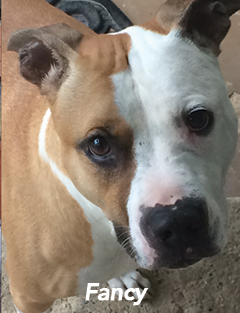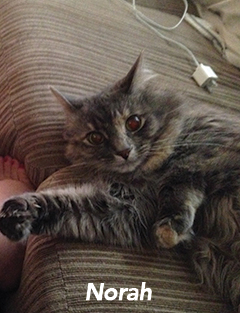Basketball, tennis, scuba diving, skiing, water sports, golf, and so much more – these can all be adapted for individuals with physical disabilities. Many people who have disabilities are unaware that their sports and leisure activities of choice can be adapted to meet their needs, whether it’s participation in a wheelchair, modifying/adding equipment or modifying the rules. For example, in tennis, playing in a wheelchair and having two bounces instead of one are allowed. Snow skiing can be done with one ski (for amputees), in a sit ski, or can have outriggers for extra support and stability. Lower limb amputees can ski with two standard skis while using a prosthesis.
In this picture, Eric Flynn is showing off some skis that have been adapted for his use. The ski binding attachments were made by Enabling Technologies of Colorado.
Dankmeyer, Inc. modified the binding attachments for direct attachment to Eric's prostheses. Baltimore Ski Warehouse, a local ski shop, set up the skis and bindings. There are ski specific feet that could be used; you can see those by clicking on either of these links: Freedom Innovations and Otto Bock. Or, Eric could have used more standard prosthetic feet and ski boots. There are many options for adapting ski equipment or other sports equipment for prostheses and it takes a TEAM to find the right solution at the right time for a specific person. This is a very practical solution as it is simple and durable and was just the right solution for Eric for his first ski outing. He did so well, we will have to see how we can support his interest in the sport and make sure the equipment keeps up with him!!
Sports can be done with prostheses/orthoses or without, depending on the participants’ choice and comfort level. Some sports, including tennis, can be done alongside individuals without disabilities. Variations on rules and equipment are based on types of disability and are sport-specific. Previous patient story Jenny Windsor trained for months to compete in her first Rugged Maniac challenge, involving a number of obstacles for running, climbing and jumping and mud. This required a great deal of stamina and upper body strength to complete. She worked carefully with her prosthetist to make sure she was prepared.
Participation in adaptive recreational or competitive sports provides tremendous physical and emotional health benefits, including those related to a healthy weight, improved quality of life, and decreased stress. It also provides opportunities for social interaction with people who have had similar life experiences and with their peers who do not have a physical disability.
An acquired disability does not mean that the individual cannot do a sporting activity that they enjoy, whether it’s competitive or recreational. Athletes do not have to be Paralympians to participate, and everyone with a physical disability is welcome. Individuals may want to try something that they haven’t ever tried before, and sometimes an adapted version is a great way to get introduced to a sport. Many local and national organizations offer opportunities to learn new activities and participate at recreational and competitive levels. Some of these include:
- University of Maryland: http://umrehabortho.org/programs/adapted
- Kennedy Krieger: https://www.kennedykrieger.org/community/adaptive-sports-program
- Disabled Sports USA local chapters: http://www.disabledsportsusa.org/locations/
- Baltimore Area Recreation and Sports: http://www.barsinfo.org/
- Baltimore Parks and Recreation adaptive programs (therapeutic recreation): http://www.baltimorecountymd.gov/agencies/recreation/programdivision/therapeutic/index.html
- Howard County - https://www.howardcountymd.gov/Departments/Recreation-and-Parks/Programs/Therapeutic-Rec
On September 10, 2016, the University of Maryland Rehabilitation and Orthopedic Center hosted the 8th annual Adaptive Sports Festival, which provided an introduction to adaptive sports to the local community with physical disabilities as well as present and past patients. It was a great way for individuals to learn about local programs, resources, and adaptive sports teams. It also was a great way for individuals with disabilities to meet peers who can understand the lifestyle changes and challenges they face.
The Paralympic Games occur in parallel with the Olympic Games, where athletes from all over the world with various types of disabilities compete. In fact, they are happening now in Rio! They originally started following World War II for veterans and civilians with disabilities and grew from there, incorporating a wide variety of athletes with disabilities. The Paralympics serve as a celebration for competition and provides motivation for individuals who may not necessarily be athletes realize that anything is possible despite having a disability. Read more at https://www.paralympic.org/ and watch on NBC. The Paralympics occur from September 7-18.
For an amazing video of the kinds of sports and athletes that will be in the Paralympics, click here.
If you have any questions about how YOU might participate in a sport, either in an adapted fashion or not, then let your clinician know.
- Kristen Beltran, Resident Prosthetist, Orthotist






















